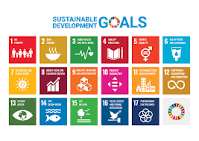WASTE DISPOSAL HABITS: A REFLECTION OF ENVIRONMENTAL AWARENESS
In the narrow lanes of Kathmandu, the sight of scattered plastic wrappers,
leftover food, and other debris has become a familiar scene. Garbage bins
overflow, and sometimes the waste finds its way to rivers or empty plots,
silently undermining the city’s beauty and health. Yet, amidst this visible chaos,
there lies a deeper story—one that reflects not only habits of waste disposal
but also the evolving environmental awareness of communities and individuals.
Waste disposal is much more than a daily chore; it is a mirror that reveals
how people relate to their surroundings. In neighborhoods where bins are
respected, where sorting of biodegradable and non-biodegradable waste happens
regularly, and where clean-up drives gather enthusiastic participants, there is
a clear signal of collective responsibility. Conversely, places where littering
is rampant often reveal a disconnect—whether due to lack of infrastructure,
education, or a sense of ownership.
The habits around waste also tell us about cultural attitudes toward
consumption and care. For many, the throwaway culture—enabled by increasing
availability of packaged goods and single-use plastics—clashes with traditional
practices of reuse, repair, and composting. In rural areas, for example,
organic waste often returns to the earth or feeds livestock, closing a natural
loop. In urban centers, however, this cycle is disrupted, replaced by piles of
mixed waste that challenge municipal systems and local patience.
What complicates this picture further is the role of infrastructure and
governance. Even the most environmentally conscious individual can be thwarted
by irregular waste collection, unclear rules, or lack of convenient disposal
options. Public awareness campaigns and policies promoting recycling and
segregation have made strides, but their effectiveness often depends on
consistent follow-through and community engagement. When local bodies
collaborate with citizens—through initiatives like door-to-door waste
collection, composting programs, or public awareness events—change becomes
possible.
Interestingly, the younger generation appears more attuned to environmental
issues, advocating for reduced plastic use, community clean-ups, and
sustainable alternatives. Schools and social media platforms amplify these
voices, fostering a culture that challenges older habits and pushes for greener
practices. Yet, awareness does not always translate into action, especially
when convenience, cost, and habit intervene. The gap between knowledge and
practice remains one of the key challenges in improving waste disposal behavior.
Waste disposal habits also carry a social dimension. Clean, well-kept
streets often correlate with higher social cohesion and pride, while littered
areas can signify neglect and marginalization. The effort to maintain public
cleanliness can thus become an act of community building, a shared investment
in a better environment. When neighbors pick up after one another or organize
collective clean-up drives, the simple act of managing waste transforms into a
statement of care and belonging.
Ultimately, waste disposal is a lens through which environmental awareness
can be gauged, nurtured, and expanded. It calls for not only individual
mindfulness but also systemic support and cultural shifts. As Nepal navigates
the complexities of urban growth and environmental preservation, how
communities manage their waste will continue to speak volumes about their
values, priorities, and vision for the future.
In reflecting on our waste habits, we are invited to reconsider our
relationship with the environment—not as distant or abstract, but as immediate
and personal. Every discarded wrapper or piece of paper is part of a larger
story about responsibility, respect, and hope. How we write that story, day by
day, will determine the legacy we leave behind for generations yet to come.

Comments
Post a Comment